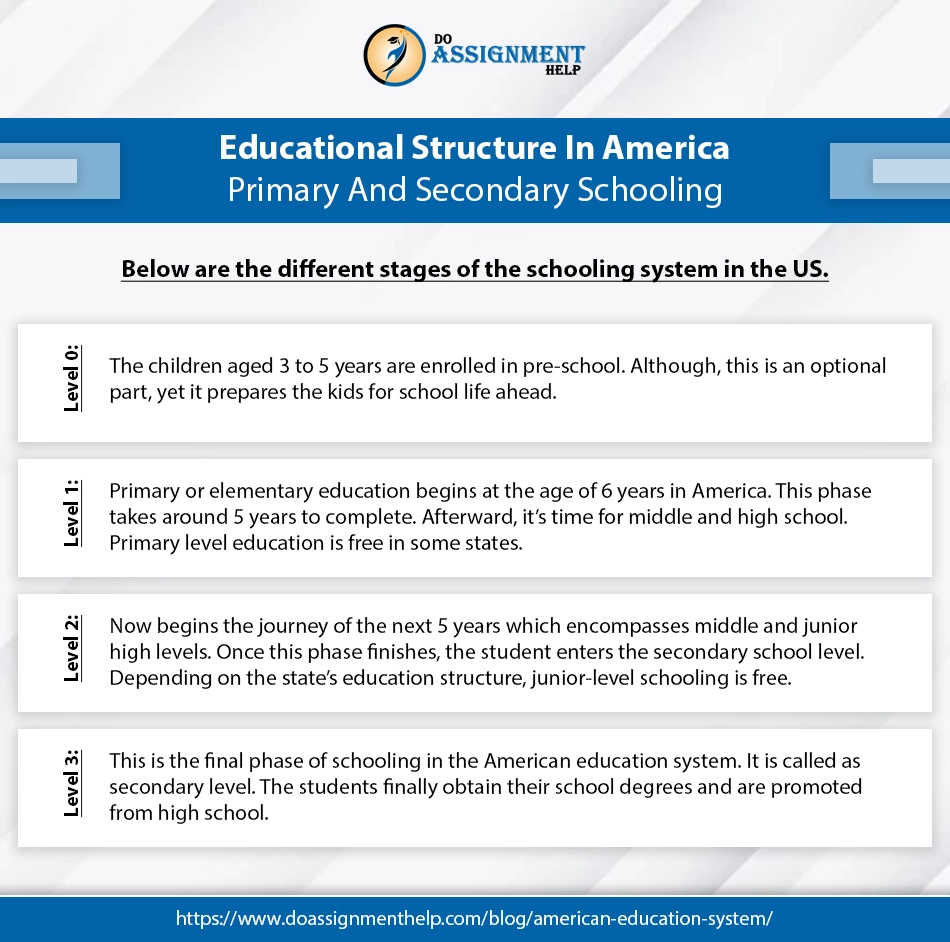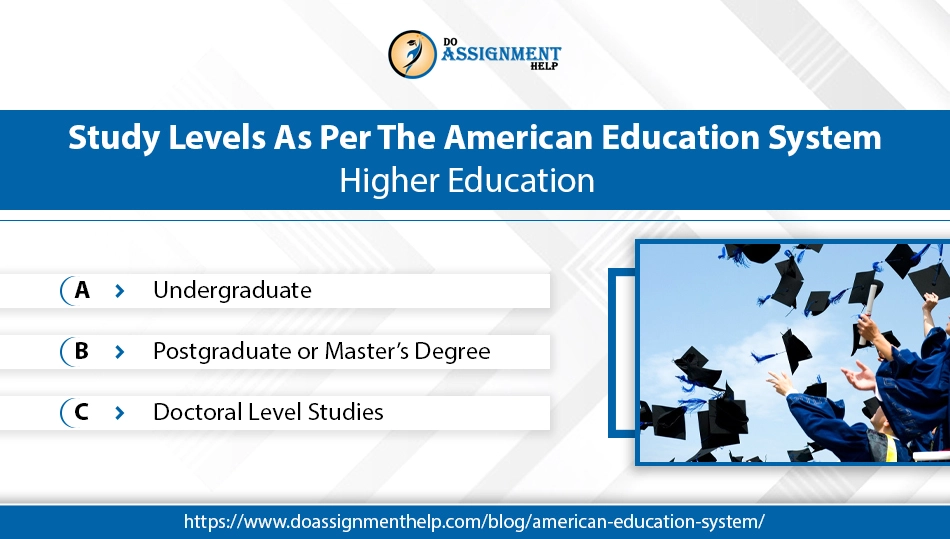Education plays a significant role in transforming an individual’s life. In the United States, the campuses are huge and enticing. But, what can a person expect in terms of education? People who move to America are often concerned about their children’s academic growth. The best part is, a person can send their young ones to a public school, a private one, or simply homeschool them. This variation is one of the best things about the American education system.
Let us break everything down to help you to know how USA education is structured systematically. We will take you through everything, from the elementary level to the higher classes. This will help you understand how things work and design the best plan for yourself.
“Education is the passport to the future, for tomorrow belongs to those who prepare for it today.”
Table of Contents
Educational Structure In America: Primary And Secondary Schooling

Public schools are widely funded and run through taxes collected from citizens. Hence, they offer free education to the students. However, parents would have to spend on transport, learning material, stationery, and uniforms. Contrarily, private schools charge a heavy amount as fees.
In America, the time period of primary and secondary schooling is 12 years. It comes before the higher education level. The sequence may include elementary level, junior, and then senior high level.
Below are the different stages of the schooling system in the US.
Level 0: The children aged 3 to 5 years are enrolled in pre-school. Although this is an optional part, it prepares the kids for school life ahead.
Level 1: Primary or elementary education begins at the age of 6 years in America. This phase takes around 5 years to complete. Afterward, it’s time for middle and high school. Primary-level education is free in some states.
Level 2: Now begins the journey of the next 5 years which encompasses middle and junior high levels. Once this phase finishes, the student enters the secondary school level. Depending on the state’s education structure, junior-level schooling is free.
Level 3: This is the final phase of schooling in the American education system. It is called as secondary level. The students finally obtain their school degrees and are promoted from high school.
Must Read: The Significant of Equity and Equality in Education
Higher Education In America: A Systematic & Diversified Approach

“An investment in knowledge pays the best interest.”
The United States follows the system of accreditations, rather than being centrally organized. They receive accreditations nationally or regionally from independent bodies. The academic institutions offer a wide range of courses in a diversified number of subjects. Thus, it allows students the freedom to pursue any subject of their choice.
Institutions For Higher Education In The US
Let’s share a quick overview of various types of institutions for higher education in the USA.
1. State School or University or College
Every state in the United States has a minimum of one top-notch university where students can acquire education at an affordable fee.
The institutions are funded by the state government and related departments. Therefore, these are the best option as the fee structure is negligible.
2. Private College or University
The private colleges run through self-funding. That is the reason they have a whooping fee structure. Any private institution is the priciest as per the American education system.
3. Community Colleges
The idea of a community college is to serve the community. In general, it offers higher education support through traditional learning methods. Moreover, the classes are organize for major subjects including history, math, etc.
They serve the purpose of preparing students for universities. Even if you are looking for a job, or wish to up-skill, this would be the best place for you! They are basically a supporting institution that shapes students for a better tomorrow.
4. Technology Teaching Bodies
The technology institutes in the USA offer 4-year courses. Hence, they are the best place to sharpen your technical knowledge and pave the way for a successful future.
Must Read: Know about Modern-Day Education Scenario
Study Levels As Per The American Education System: Higher Education

The United States follows a decent practice in its education system. It has furthered the higher academic levels into a proper structure. Let’s explore the options available to students living in America.
1. Undergraduate
After passing from high school, the students can take up a 4-year graduation course directly. Another option is community colleges, which could be a good start.
Later on, one can switch to a university and pursue the course further. The availability of assignment help specialists makes it possible for students to maintain a seamless flow of their studies.
Talking about the courses, there is no dearth. You can choose from science, literature, arts, social science, etc. The subjects in ungraduated courses are referred to as “majors”. You get the option to switch afterward. However, this could be an expensive deal so choose wisely.
2. Postgraduate or Master’s Degree
After the undergraduate degree, taking up a post-graduation course would add stars to your professional life. It might come as a surprise, but in the American education system, some fields demand a mandatory master’s degree. This includes engineering, education, library science, behavioral health, etc.
Moreover, the master’s program takes 2 years to complete. Subsequently, one can either look for professional opportunities or go for further studies.
If a student wants to enroll in a post-graduation program, it is necessary to appear and pass the following tests:
LSAT: The test is for law aspirants.
GRE: Students who wish to pursue masters in America are required to appear in this common test.
MCAT: Those who wish to pursue medical studies need to give the MCAT.
GMAT or GRE: Admission to master’s in business requires GMAT or GRE scores.
3. Doctoral Level Studies
Students who are eager to expand their academic learning can further pursue doctoral courses. The minimum requirement to take up a Ph.D. course in some institutions is a post-graduation degree. Whereas, other schools have set the criteria of enrolling the students even without a PG certificate.
The time frame that a Ph.D. course requires to complete is approximately 5 to 6 years. It definitely adds an extra feather to your cap! The career options are excellent with a rewarding salary package.
Final Words
There is no doubt that the American education system considers students from every financial and academic background. The courses are widely available for various subjects and in different institution types. Hence, it helps individuals to examine their needs and choose the right option.
Also Read: What Makes Online Education A Better Mode Of Learning?
 Santa Clara, CA 95050
Santa Clara, CA 95050 





